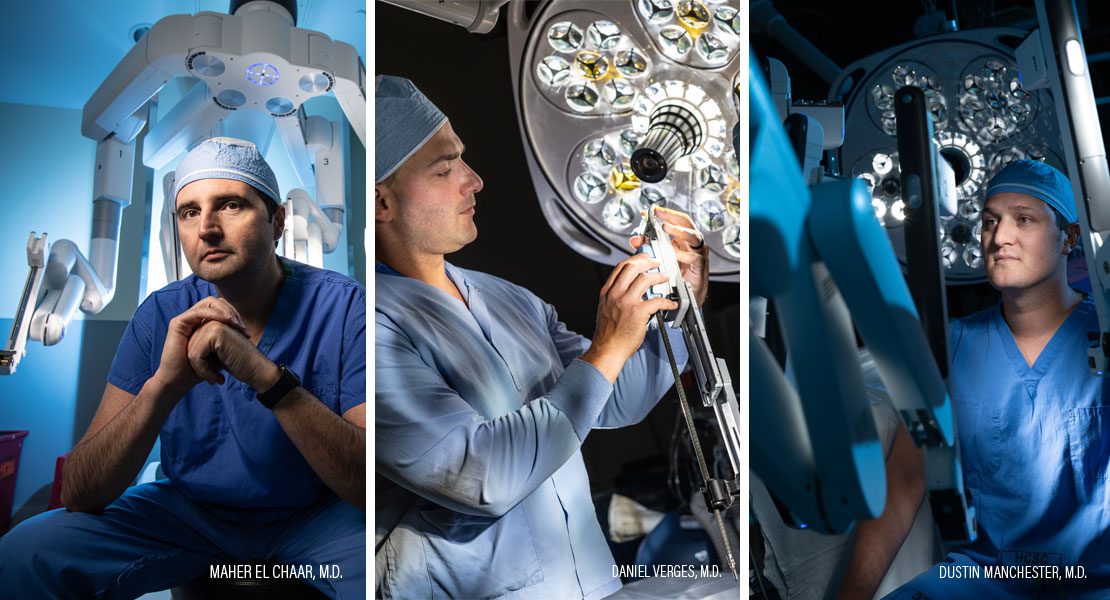The Increasing Role of Robotics & Technology In Medicine

What was once the vision of the future is now today’s reality. Robots, and technology in general, are making the delivery of health care easier and leading to better outcomes and improved recovery times for patients.
Robotic surgery is being used to treat lung cancer, prostate cancer, perform bariatric procedures that aid in weight loss, and much more.
Daniel Verges, M.D. at St. Luke’s University Health Network says technology in medicine is the standard of care.
Verges is a urologist, a specialized surgeon focusing on diseases of the male and female urinary-tract system and reproductive organs.
“Basically, we’re plumbers of the body”, he says.
Verges has used robotic surgery to remove kidney stones, treat prostate cancer, and perform reconstructive surgeries on kidneys and bladders.
There are 3 surgical robotic systems at St. Luke’s that utilize small tools that are inserted in the abdomen. Surgeons steer the robot in small anatomic spaces using a camera that offers 10 times magnification to aid in procedures.
Verges says technology allows him to insert a tiny camera in the drainpipe of kidneys and use shock waves to break up stones, rather than performing open surgery.
“Robotic technology allows us to be more precise and it’s being used as a better way to solve medical problems,” Verges says. Robotic surgery can be used to treat prostate cancer, remove a prostate, and reconstruct a bladder or urethra.
“It’s minimally invasive. In the past, a patient with a kidney tumor might have us removing the entire organ leaving the individual susceptible to chronic disease down the road. Today, robotics allow us to remove only the tumor leaving the majority of the kidney intact,” Verges continues.
Technology allows for smaller incisions, less blood loss, and quicker recovery times. A prostatectomy that used to require a 3- to 4-day hospital recovery can now be performed as laparoscopic surgery, allowing patients to go home the next day.
“An 8-inch incision in the past is now a few incisions measuring just centimeters,” Verges says.
Even those who are on the fence about “robots” often come around when they hear of the quicker recovery times.
“Before deciding robotics is the best approach, we review and discuss all appropriate treatment options with patients including risks, benefits, and alternatives”, he says.
“Technology has helped tremendously in my practice and it helps patients,” says Maher El Chaar, M.D. at St. Luke’s Weight Management Center in Allentown. “People are coming back to us and asking for other options besides medication.”
“St. Luke’s offers Stretta and LINX, two robotic, minimally invasive procedures that can control chronic heartburn, or gastroesophageal reflux disease (GERD), which afflicts millions,” El Chaar says.
“We decide which one is the best approach and pick the best procedure for the patient,” El Chaar says.
El Chaar is the co-medical director of Bariatric Surgery at St. Luke’s, where 500 procedures are performed a year for weight loss and other medical issues and has authored research articles and spoken at national conferences on the subject.
“The robotic platform is perfect for GERD and these types of operations that take us into narrow, small spaces near very crucial structures,” says Dustin Manchester, M.D. of St. Luke’s Thoracic Surgical Associates.
In his past year with the network, Manchester has performed more than 60 robotic lung/thoracic surgeries. It is his area of expertise.
“We have precise instruments and excellent visualization with small, minimally invasive incisions,” he says.
Robotic thoracic procedures typically take less time than open surgery. Most patients stay overnight and are back to daily function in 10 days to 2 weeks, versus open operations which require 5 to 7 days in the hospital, followed by 4 to 6 weeks of recovery at home.
“It’s a big improvement and one of the major benefits of robotic surgery,” Manchester says. “We can fix these complex problems without causing a difficult recovery.”
Robotic surgery also reduces pain associated with open operations and large incisions.
Robotic surgery has given patients excellent results and allows them to get back to their normal activities faster.
For more information on robotic surgery options or to consult a physician, contact 1-866-ST-LUKES.


















